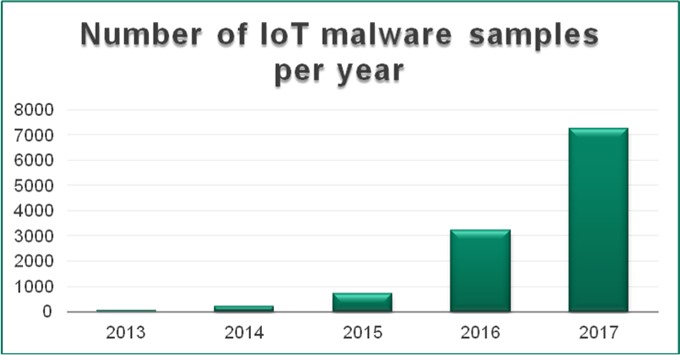 Economy
Economy

The total number of malware samples targeting smart devices has reached more than 7,000, with over half of these emerging in 2017, according to Kaspersky Lab’s researchers.
 |
| The total number of malware samples targeting smart devices has reached more than 7,000, with over half of these emerging in 2017. — VNS Photo Courtesy of Kaspersky. |
HCM CITY — The total number of malware samples targeting smart devices has reached more than 7,000, with over half of these emerging in 2017, according to Kaspersky Lab’s researchers.
Smart devices such as smartwatches, smart TVs, routers, and cameras are connecting to each other and building the growing Internet of Things (IoT) phenomenon, a network of devices equipped with embedded technology that allows them to interact with each other or the external environment.
Because of the large number and variety of devices, the IoT has become an attractive target for cyber criminals. By successfully hacking IoT devices criminals are able to spy on people, blackmail them, and even discreetly make them their partners in crime.
Kaspersky Lab’s experts have conducted research into IoT malware to examine how serious the risk is.
They have set up honeypots – artificial networks, which simulate the networks of different IoT devices to observe malware attempting to attack their virtual devices.
Attacks using known and previously unknown malicious samples started almost immediately after the honeypot set up.
Most of the attacks registered by the company’s experts targeted digital video recorders or IP cameras (63 per cent ), and 20 per cent of hits were against network devices, including routers, and DSL modems.
China (17 per cent), Việt Nam (15 per cent), and Russia (8 per cent) emerged as the top three countries with attacked IoT devices.
According to experts, the reason behind the rise is simple: the IoT is fragile and exposed in the face of cybercriminals.
The vast majority of smart devices are running operating systems based on Linux, making attacks on them easier because criminals can write generic malicious code that targets a huge number of devices simultaneously.
According to industry experts, there are already more than six billion smart devices across the globe. Most of them do not even have a security solution, and their manufacturers usually do not produce any security updates or new firmware.
To protect devices, Kaspersky Lab security experts advise that users should not access their device from an external network if not needed.
Besides, all network services that are not needed should also be disabled, the default password should be changed and a new one set before the device is used, and the device’s firmware should be regularly updated to the latest version if possible. — VNS




